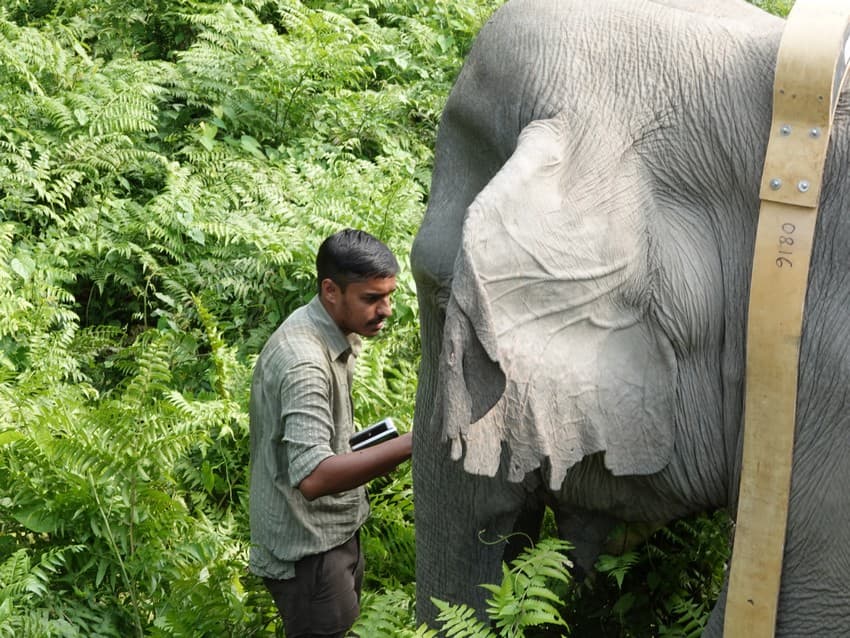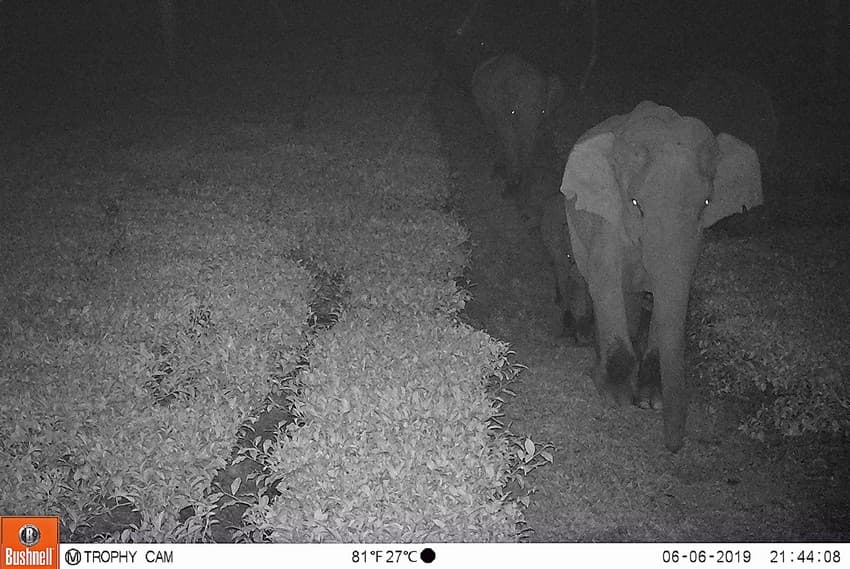Project Title
Evaluating the efficacy of human elephant conflict (HEC) mitigation strategies in reducing negative interactions in a biodiversity hotspot

Project Grantee
Aritra Kshettry (M.Sc Wildlife Biology and Conservation, NCBS-TIFR, WCS-India)
Q & A with the Grantee
1) How is your assessment of the human-elephant conflict mitigation strategies in northern districts of West Bengal helping to improve upon the presently practiced methods?
The study was the first ever systematic assessment of the existing conflict mitigation strategies in a high conflict landscape of northern West Bengal. The assessment has provided empirical support in discussion with policy makers and wildlife managers in the region. The results of the study were used to convince the Forest Department to abstain from conducting ‘Elephant Drives’ which are highly detrimental in nature and also cause human casualties when people go too close to elephants. Our assessment of compensation payments indicated that most of the affected families do not claim ex-gratia payments, but, have deep religious sentiments with regards to crop depredation by elephants. We have used these findings to recommend better ex-gratia payment methods using mobile applications and prompt verification and disbursal. Furthermore, we have also reinforced the cultural beliefs around elephants in our contact programs with the local communities. However, ultimately these practices need to be institutionalised and hence, I have also been included in the Indo-German Project on Human-Wildlife Conflict as an expert consultant. The project aims to develop national and state level strategies for conflict mitigation.
2) Could you narrate an experience from your time working on the project that revealed a certain facet of the elephant’s personality that you were hitherto unaware of?
The WCT Small Grant helped fund our long-term research and conservation work in the region which faces high frequency of negative interactions between people and large wildlife like elephants and leopards. During field work, our team made behavioural observations of elephants as they passed through human habitations. The aim was to find if there are any specific behavioural adaptations that the elephants use while passing through human habitations. We found that even though elephants were active during the day inside the forest, their movement through human habitations was recorded almost exclusively at night. This is in contrast to other tea-plantations such as in Assam and Valparai where elephants use tea-plantations even during the day. The main reason for this could be the high crowd build up whenever elephants are sighted and the elevated risks the elephants face. In rare cases, when elephants are stuck in the plantations during the day, large crowds gather to watch the elephants, often to chase them or harass the animals. Our awareness work has been focused on building acceptance among people towards elephants in the region to minimise such negative interactions.
3) Which are the most prevalent modes of conflict mitigation strategies employed by the communities and the Forest Department in this region?
The most prevalent conflict mitigation methods before our engagement with the Forest Department were:
- Ex-gratia payments
- Chasing elephants from one forest to another
After our long-term research and conservation interventions, public engagement and awareness is increasingly being used by the Forest Department to minimise the risk of accidents. Chasing elephants has been restricted to a minimum and that too only in unavoidable situations like when elephants venture into crop fields at night.
Several local voluntary teams called Quick Response Teams have been formed now in areas where elephants frequently visit. These teams have been equipped with high power torches and safety jackets and they often help in crowd management during wildlife emergencies, and also are the first responders to elephant entry in villages. This step of setting up quick response teams has been well received by the local stakeholders of the region.

Images courtesy: Aritra Kshettry
